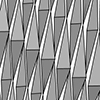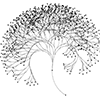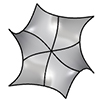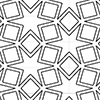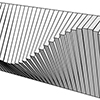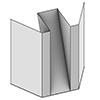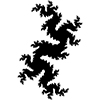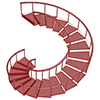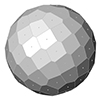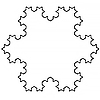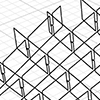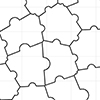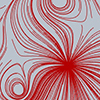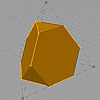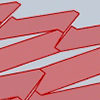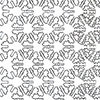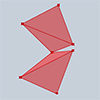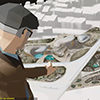This is the continuation of a very old parametric model of a building facade, presented here. I will introduce the basic Grasshopper definitions of several alternative designs. The first one is the rhombus facade. The first part of the algorithm deals with the necessary data collection. We reference a polyline from the Rhino model as the path that the facade will follow. After that, we create vertical lines around the […]
Posts categorized under Research
There are cognitive, technological, and pedagogical ideas and experimental studies on architectural design education in virtual environments. In the existing literature; new software tools were developed, add-ons to existing software were developed, or software prototypes were developed and tested on various platforms such as game engines. In the distance education model, currently, there is no stand-alone software, specifically developed for the needs of architectural design studios. Similarly, there is no […]
The Animated Tree Growth is an interesting study for Grasshopper. First, I developed a regular tree generation definition similar to those I studied earlier, here, here, and here. In component group 1, I develop an initial generator arc. Then, in group 2, I generate the fractal tree by using iteration. I did this with the help of the Anemone add-on. The interesting and original part of this definition is group […]
Here is the method I used for approximately modeling the Gyroid, a triply-periodic minimal surface. It is very popular in architecture because the symmetrical solids and voids it generates are interesting. I modeled this for the Common-action Wall project we exhibited together with Fulya Akipek in 2017. After several attempts to generate it in Grasshopper, I decided to model it in Rhino. There are some sources on the internet, explaining […]
This is the six-pointed star lattice definition in Grasshopper. The definition is generating CNC or laser-ready results as seen below. In this code, first, I developed a common star pattern by exploding a hexagonal grid. The tricky part of this definition is the last part. There, you can see how you can use the Region Union (RUnion) component to add thickness to a pattern we have drawn before. The operation […]
Santiago Calatrava, a celebrated Spanish architect, structural engineer, sculptor, and painter, is renowned worldwide for his groundbreaking and futuristic designs, which frequently fuse architecture with engineering and artistry. Among his many notable works is the door design at Ernsting Warehouse in Coesfeld, Germany, constructed in 1985. I call this Calatrava Door because this design showcases Calatrava’s keen sense of functionality and geometry, with aluminum slats arranged vertically and connected along […]
This is my first experiment on developing add-ons for Grasshopper. There are two components in the “Parquet Deformations” add-on. These are the ghuser files coded in Python. So, they can work by just dragging and dropping to the Grasshopper canvas. These first two components of the toolset are more like helpers while designing Parquet Deformations. I introduced some of my re-generations of classical parquet deformations here and here and in […]
Here is a tattoo design I am currently developing by using Grasshopper. 11 years ago, I developed a Grasshopper definition that approximates Julia Sets here. One of the experimental outputs of that definition looks suitable for a tattoo design. It is a beautiful fractal shape. But I am not perfectly sure about its suitability for a tattoo. Here it is: This was generated by the function z2+c and the parameters […]
This is a basic Grasshopper exercise, covering many fundamental topics. The aim is to create the parametric model of a spiral staircase. This is more educational than functional, I guess. Below is the explanation of the Grasshopper definition in three parts. Helix Points for the Spiral Staircase In the first part of the definition, I am defining the points ordered on a helix. First, I calculate the number of steps […]
This website explains the problem and several solutions. I managed to implement the formulas to convert a 2D square grid into spherical coordinates. The Fibonacci Sphere is one of the solutions to the equal distribution of points on a sphere. It is not the best solution to this problem. But it is regarded as a quick and efficient one. Suitable for me. I developed this Grasshopper code by studying the […]
This is an implementation of the famous Koch Snowflake Fractal in Grasshopper. We will be using the Anemone add-on to handle the iterations. In this fractal, we start from an equilateral triangle. Then, we form new equilateral triangles, one-third of the side. So that each repetition protrudes in the middle of all the sides. In summary;1: Take a closed polygon and divide it into parts and divide each side into […]
I studied the interlocking joint details in Grasshopper here and here. This time, the interlocking structures were revisited with a cleaner code and an in-depth explanation. I believe that this is a very good educational exercise for learning the potential of the native Grasshopper components. The Preparations The Region Difference (RDiff) component is used to create the interlocking detail of a surface that is contoured with bi-directional spacing. In the […]
In this Voronoi puzzle exercise, we derive two-dimensional puzzles by using Voronoi diagrams. This is similar to my previous studies here, and here. Part 1: The Random Voronoi Diagram In section 1 of the below image, I use a rectangular region to generate random points. Then, I create a standard Voronoi diagram by using those points. Finally, I explode the Voronoi cells. Part 2: The Voronoi Puzzle Details In the […]
Fields is a native group of components available since the very early version of Grasshopper. In today’s Design Computing class, we studied it again with the first-year design students. I studied these interesting and beautiful shapes earlier here, here, here, and here. The one you see below is a short in-class exercise about vector fields. The exercise aims to show the Grasshopper’s capabilities in form-finding studies via Field Lines. The […]
This paper investigates the integration of robotic fabrication into first-year undergraduate design education, particularly in a basic design studio. Traditionally, robotic technologies are not introduced at this level due to perceived skill gaps among novice students. The study demonstrates the potential and strategies for incorporating robotic arms into early design education through an experiment conducted at Istanbul Bilgi University. The experiment involved 32 students from various design disciplines, divided into […]
While digging through the lecture archive, I found this video I made in 2017. We introduce Platonic solids and Archimedean solids in the Design Geometry course at Istanbul Bilgi University. This video shows how we can create an Archimedean solid, the Truncated Tetrahedron, by folding it from a flat sheet.While doing this, I intersected the spheres by using the relations between the side lengths of the solid, and I calculated […]
This is the continuation of the physical prototyping project of a folding pattern from 9 years ago. I simulate the folding pattern using the Rhino Grasshopper Kangaroo. As seen in the video, this is possible thanks to the pre-set hinge positions on the Rhino model. Thus, the folding motion can be animated on the screen. You can download and try the Grasshopper code. I often use this code in my […]
The Parquet Deformation named “Wiry Wonder” was designed by Michael Cuttita in William Huff’s studio at the State University of New York in 1989. The below figure shows the original drawing made by the student. Similar to the previous one, this composition is based on a hexagonal lattice. In this composition there are three significant prototiles, marking the three key moments in the shape-shifting process. There is also one invisible […]
Here is the Grasshopper implementation of the famous Evolution Door design by Klemens Torggler. The code I used here is from my course on Parametric Modeling. This Grasshopper algorithm is a good exercise for the basics of Kangaroo. I attached several goal objects to a special mesh object created in Rhinoceros. Kangaroo’s goal objects work as expected to simulate the folding door behavior. I used the goal objects to fix […]
The Istanbul Bilgi University Scientific Research Project, titled “Exploring the Possibilities of Using Game Engine-Based Collaborative Virtual Environments in Architectural Design Studios”, or “Virtual Design Studio” in short, is about testing a virtual environment for online and blended models of education in architectural design studios. The presentation tools used in the architectural studios are directly effective in determining the boundaries of design thinking. Today, there is no specialized tool for […]

